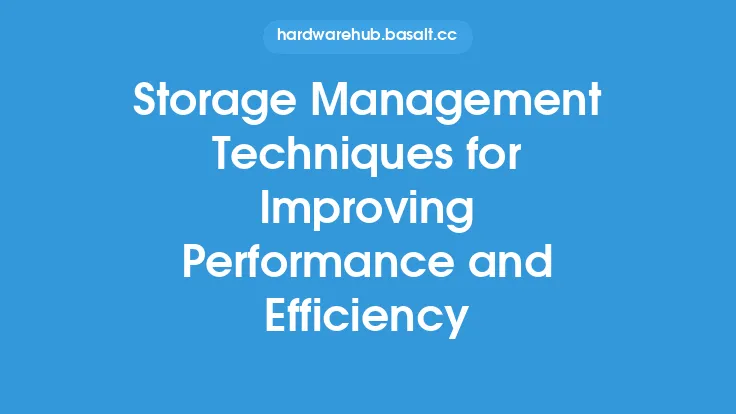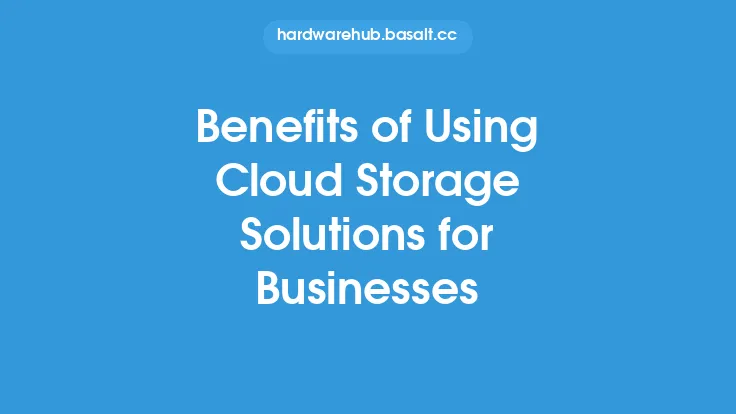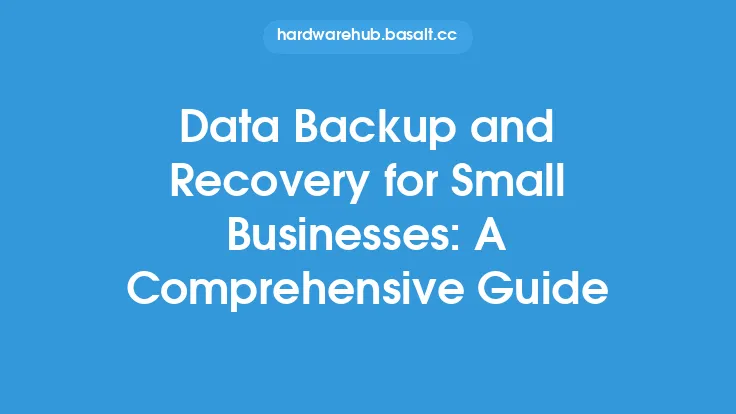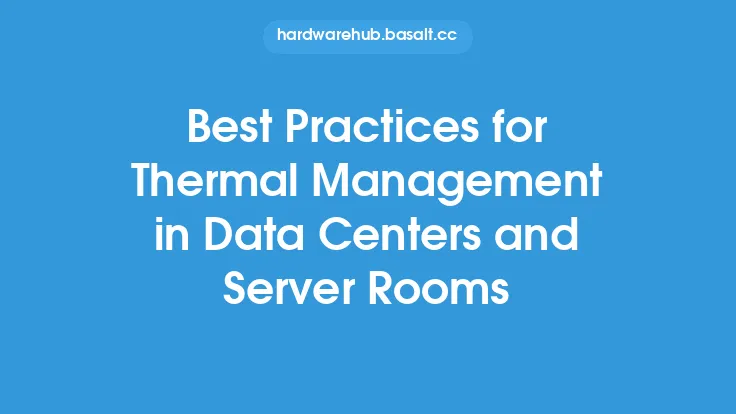As a small or medium-sized business, managing storage effectively is crucial to ensure the smooth operation of your organization. With the exponential growth of data, it's essential to have a well-planned storage management strategy in place to optimize your storage resources, reduce costs, and improve overall efficiency. In this article, we'll delve into the world of storage management, exploring the key strategies and techniques that can help small and medium-sized businesses make the most of their storage infrastructure.
Introduction to Storage Management
Storage management refers to the process of monitoring, controlling, and optimizing the storage resources within an organization. It involves a range of activities, including capacity planning, performance monitoring, data protection, and storage allocation. Effective storage management is critical to ensuring that data is available, accessible, and secure, while also minimizing storage costs and maximizing storage utilization.
Assessing Storage Needs
Before developing a storage management strategy, it's essential to assess your organization's storage needs. This involves evaluating the types of data you need to store, the amount of storage capacity required, and the performance requirements of your applications. You should also consider factors such as data growth rates, user demand, and regulatory compliance requirements. By understanding your storage needs, you can develop a tailored storage management plan that meets the unique requirements of your organization.
Storage Technologies and Options
Small and medium-sized businesses have a range of storage technologies and options to choose from, including direct-attached storage (DAS), network-attached storage (NAS), storage area networks (SANs), and cloud storage. Each of these options has its own strengths and weaknesses, and the choice of storage technology will depend on factors such as performance requirements, capacity needs, and budget constraints. For example, DAS is a cost-effective option for small businesses with limited storage needs, while SANs are better suited to larger organizations with high-performance requirements.
Storage Management Tools and Software
Storage management tools and software can help small and medium-sized businesses optimize their storage resources, improve performance, and reduce costs. These tools can provide features such as capacity planning, performance monitoring, data protection, and storage allocation, as well as automation and orchestration capabilities. Some popular storage management tools and software include storage resource management (SRM) software, storage virtualization software, and cloud storage management platforms.
Data Protection and Backup Strategies
Data protection and backup are critical components of a storage management strategy. Small and medium-sized businesses need to ensure that their data is protected against loss, corruption, or unauthorized access. This can be achieved through a range of backup strategies, including disk-to-disk-to-tape (D2D2T), disk-to-disk-to-cloud (D2D2C), and cloud-to-cloud backup. You should also consider implementing data protection policies, such as data encryption, access controls, and authentication mechanisms.
Storage Security and Access Control
Storage security and access control are essential to ensuring that sensitive data is protected against unauthorized access or malicious attacks. Small and medium-sized businesses should implement robust security measures, such as encryption, firewalls, and intrusion detection systems, to protect their storage infrastructure. You should also establish access controls, such as user authentication and authorization, to ensure that only authorized personnel can access sensitive data.
Monitoring and Performance Optimization
Monitoring and performance optimization are critical to ensuring that your storage infrastructure is running efficiently and effectively. Small and medium-sized businesses should implement monitoring tools and software to track storage performance, capacity, and utilization, as well as to identify potential bottlenecks or issues. You should also optimize storage performance by implementing techniques such as storage tiering, caching, and deduplication.
Cloud Storage and Hybrid Storage
Cloud storage and hybrid storage are becoming increasingly popular among small and medium-sized businesses. Cloud storage provides a scalable, on-demand storage solution that can be easily integrated with existing storage infrastructure. Hybrid storage, which combines on-premises storage with cloud storage, offers a flexible and cost-effective solution for organizations with varying storage needs. By leveraging cloud storage and hybrid storage, small and medium-sized businesses can reduce storage costs, improve storage utilization, and enhance data protection and backup.
Best Practices for Storage Management
To get the most out of your storage management strategy, it's essential to follow best practices for storage management. These include developing a comprehensive storage management plan, monitoring and optimizing storage performance, implementing data protection and backup strategies, and ensuring storage security and access control. You should also establish clear policies and procedures for storage management, as well as provide training and support for IT staff and end-users.
Conclusion
In conclusion, storage management is a critical component of IT infrastructure for small and medium-sized businesses. By assessing storage needs, selecting the right storage technologies and options, implementing storage management tools and software, and following best practices for storage management, organizations can optimize their storage resources, reduce costs, and improve overall efficiency. Whether you're looking to implement a new storage infrastructure or optimize your existing storage resources, the strategies and techniques outlined in this article can help you develop a comprehensive storage management plan that meets the unique needs of your organization.





